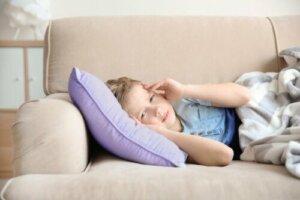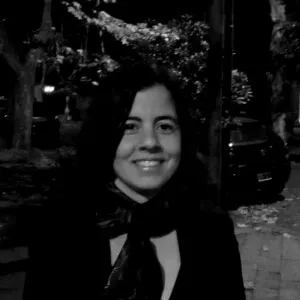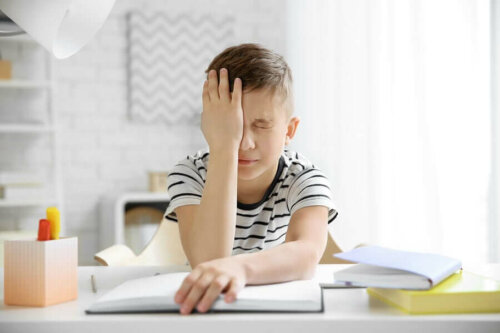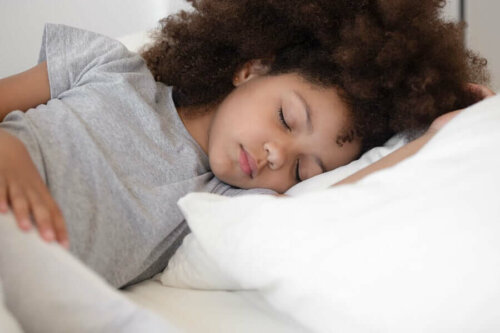Symptoms and Treatment of Migraines in Children


Written and verified by the doctor Karina Valeria Atchian
Migraines are common in children and can afflict them at any age. In fact, according to statistics from the Migraine Research Foundation, about 10% of school-age children suffer from migraines and up to 28% of teens between the ages of 15 and 19 are affected by this condition.
This type of headache is often debilitating and can interfere with daily activities. In the case of children, it leads to the kind of discomfort that can decrease their school performance and social lives.
Generally, children have fewer seizures than adults. However, this condition can be equally disabling to both age groups. Of course, it significantly affects a child’s quality of life without adequate treatment.
Symptoms of migraines in children
There are two forms of migraines.
- The episodic, which occurs sporadically
- The chronic, which is constant
Next, we’ll discuss the typical migraine attacks. We must clarify these may be different from those described in adults, though.
Oftentimes, it isn’t easy for children to identify their symptoms due to their age, much less put the perceived sensations into words. Migraines are of moderate to severe intensity and come along with other symptoms.
They unfold through a whole series of events that occur over the course of hours to days. For instance, a typical migraine attack without aura progresses through three phases.
- Premonitory phase
- Headache phase
- Post-migraine phase
Symptoms associated with the premonitory phase include the following:
- Nausea and vomiting
- Pain behind an eye or an ear
- Pain in the temples
- The sensation of seeing spots or flashing lights
- Sensitivity to light or sound
- A temporary loss of vision
- Paleness or shadows under the eyes
- Mood changes
All of these can appear hours, or even a day, before the start of the painful phase. The pain will generally affect the head bilaterally, unlike in adults, where it’ll only be on one side of the head. It can be sharp and impede undertaking daily tasks.

Aura phase
This kind of attack is an additional phase that can occur either before a headache or with it. The aura is usually visual, like sparkles when it develops. Thus, young children may be unable to express this kind of headache complaint.
Caregivers report symptoms such as paleness, decreased activity, and vomiting. The main characteristic of the post-migraine phase is a state of exhaustion.
In addition to the physical symptoms, some children may develop anticipatory anxiety because they expect another painful attack. It can alter their ability to focus at times when they’re not in pain.
Chronic migraines can occur in a small percentage of children, as mentioned above. This describes the kind of pain that lasts for more than four hours a day for 15 days or more per month, for over 3 months.
It may interest you: How to Detect Vision Problems in Young Children
Treatment of migraines in children
Children afflicted by this condition will typically want to lie down in a quiet, dark room and get relief by sleeping. Useful medications for acute migraine treatment range from common pain relievers such as ibuprofen, paracetamol, and triptans.
A patient may have to try various medications to find the most effective treatments for them. The sooner they begin to take the drugs, the more effective these will be. In addition, antiemetics can sometimes help.
There’s no absolute cure for migraines, as its pathophysiology isn’t fully understood yet. However, keeping track of your personal migraine triggers can provide helpful information on how to avoid them. This can include the following:
- Dietary considerations
- Levels of hydration
- The use of certain medications
- Changes in the sleep schedule in order to keep it consistent

See also: How to Reduce Anxiety in Children
General considerations
The presence of migraines in children can be a cause of anxiety both for the children and their parents and caregivers. So, the advice is to always consult your doctor as only they can give you an accurate diagnosis and prescribe treatment.
Finally, as we said above, make sure your child gets enough opportunities to be active and sleep. Also, ensure their access to a well-balanced diet as this can also help prevent migraines.
We hope you’ve enjoyed this article.
All cited sources were thoroughly reviewed by our team to ensure their quality, reliability, currency, and validity. The bibliography of this article was considered reliable and of academic or scientific accuracy.
- Barnes NP. Migraine headache in children. BMJ Clin Evid. 2011;2011:0318. Published 2011 Apr 11.
- Amy Gelfand, Pathophysiology, clinical features, and diagnosis of migraine in children, retrieved on 17 June 2020, Evidence-based Clinical Decision Support- UpToDate. https://www.uptodate.com/contents/pathophysiology-clinical-features-and-diagnosis-of-migraine-in-children?search=migra%C3%B1a&source=search_result&selectedTitle=2~150&usage_type=default&display_rank=2
- Barnes NP. Migraine headache in children. BMJ Clin Evid. 2015;2015:0318. Published 2015 Jun 5.
- Amy Gelfand, Migraine in kids is not just a bad headache, retrieved on 18 June 2020, https://migraineresearchfoundation.org/about-migraine/migraine-in-kids-and-teens/
-
Ahmed S, Tabassum S, Rahman SM, et al. Migraine in Children: A Review. Mymensingh Med J. 2016;25(3):589-596.
This text is provided for informational purposes only and does not replace consultation with a professional. If in doubt, consult your specialist.








